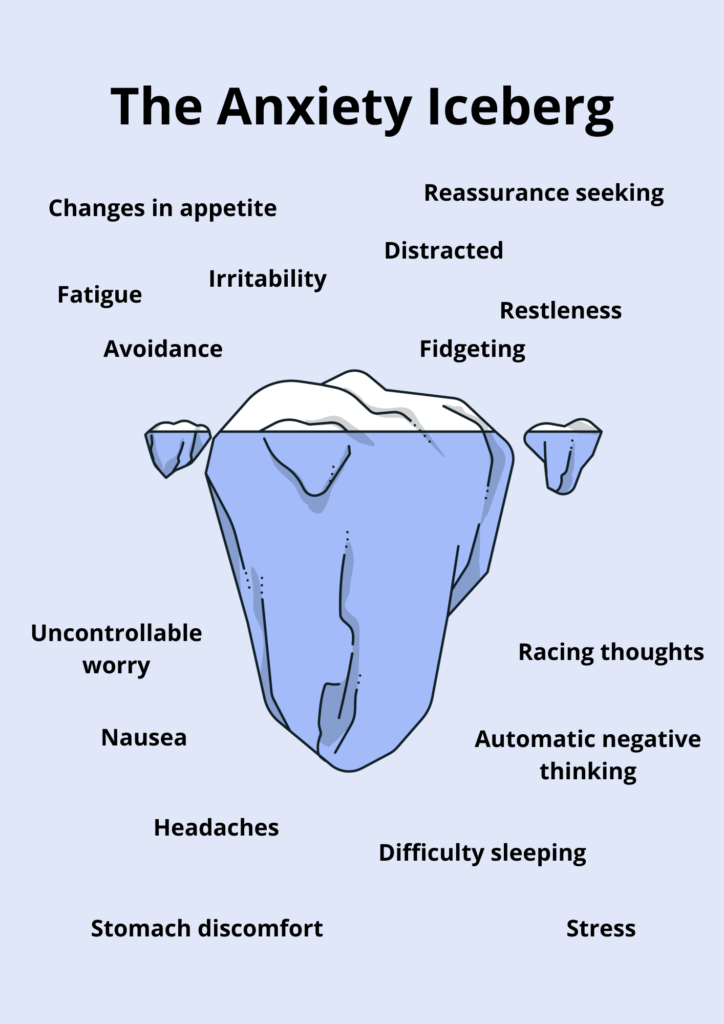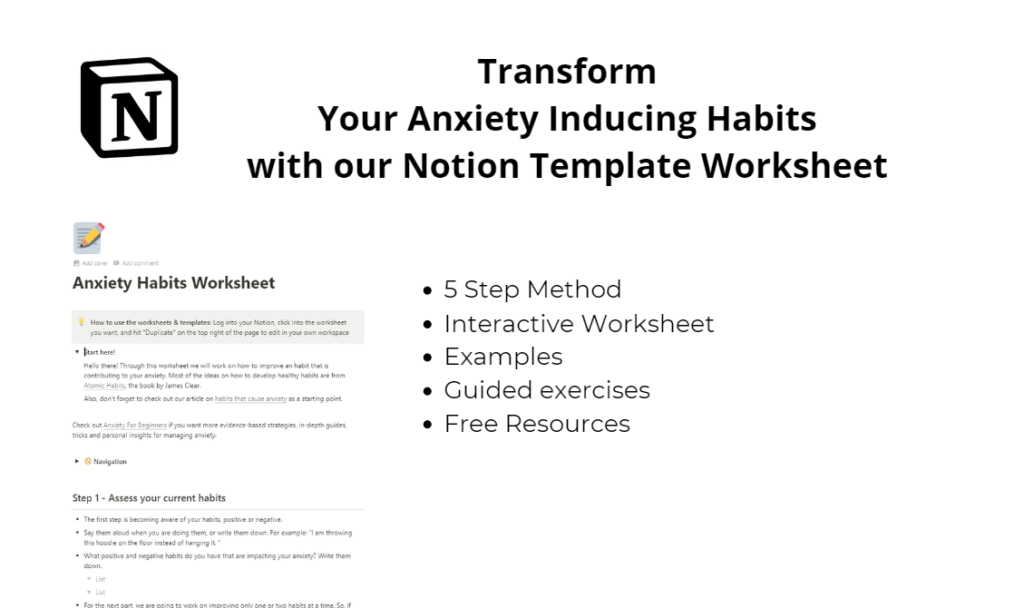The anxiety iceberg is a metaphorical representation of the different layers of anxiety, with visible symptoms being only the tip. Explore the causes, signs, and strategies to manage anxiety effectively.
The Anxiety Iceberg
The anxiety iceberg has 3 different layers:
- The visible symptoms (above the waterline)
- The hidden symptoms (below the waterline)
- The underlying causes (the deeper layers)

Visible Symptoms (Above the Waterline)
The tip of the iceberg are the anxiety symptoms that are visible to other people. This is the part of the iceberg above the waterline.
Some of the symptoms and behaviors that others may notice include:
- Irritability
- Avoidance
- Fidgeting, tapping fingers or your feet
- Sweating (such as sweating hands)
- Fatigue (showing up as black circles under your eyes, for example)
- Restless, you are in constant movement
- Difficulty concentrating, appearing as more distracted
- Reassurance seeking
- Changes in appetite
Hidden Symptoms (Below the Waterline)
The part of the iceberg that is below the waterline, are the hidden symptoms. Those are the symptoms and behaviors that the person suffering from anxiety might be hiding from others. Some examples include:
- Physical symptoms (pain, nausea, headaches, stomach discomfort) (1)
- Anxious automatic negative thinking that is hard to control
- Racing thoughts
- Uncontrollable feelings of worry
- Difficulty sleeping
Underlying Causes (Deeper Layers)
The deeper layers are the root causes of your anxiety, symptoms, and behaviors. This part is not shown in the illustration.
These are past traumas, unresolved issues, ongoing stressors, etc. Addressing them is a very important step for long-term management of anxiety.

Free Printables – The Anxiety Iceberg
The Anxiety Iceberg PDF
The Anxiety Iceberg Worksheet PDF
You can also download for free this worksheet version of the anxiety iceberg. Just download it, print it, and then think about the following questions. We will guide you through the process of mapping your iceberg.
Step 1: Above the waterline
- What symptoms do you think are visible to others?
- How do these surface symptoms manifest in your daily life?
- List the surface symptoms you usually experience
- Draw or write your surface symptoms above the waterline
Step 2: Below the waterline
- What anxiety symptoms are you hiding from other people? Why? Are you successful?
- Draw or write your hidden symptoms below the waterline
Step 3: Root causes
- What do you think are the root causes of your anxiety?
- Draw or write your root causes at the bottom of the sheet
- How do these underlying factors relate to or influence your surface symptoms or hidden symptoms?
- You can use arrows or lines to connect specific surface symptoms to the underlying factors that may be contributing to them
- How do you think you can better address these root causes? What resources or support do you have?
Coping Strategies
One of the most important steps to address the root cause of anxiety is to get professional help. You will need professional therapy, guidance from a psychiatrist, or medical advice from a doctor.
Another way is to implement lifestyle changes to reduce your anxiety. This is a long-term strategy but with meaningful results. Here are a few resources to get you started:
- The Mindless Habits That Cause Anxiety
- Anxiety Triggers Worksheet
- Caffeine & Anxiety
- The 30-Day Anxiety Challenge
- CBT Therapy Management System
- Tidy House Tidy Mind
- Anxiety Habits Worksheet
Coping skills are strategies and techniques that people use to deal with and manage stress, anxiety, challenges, and difficult emotions. With coping skills, you are managing the surface symptoms of your anxiety mostly. Coping skills might not address the root causes of your anxiety, they are a short-term strategy. But they are also important to manage difficult emotions and thoughts.
Here you have a list of further resources:
Sources
(1) Medical News Today. (2019, June 19). What to know about anxiety. Medical News Today. https://www.medicalnewstoday.com/articles/323454#symptoms

Leave a Reply